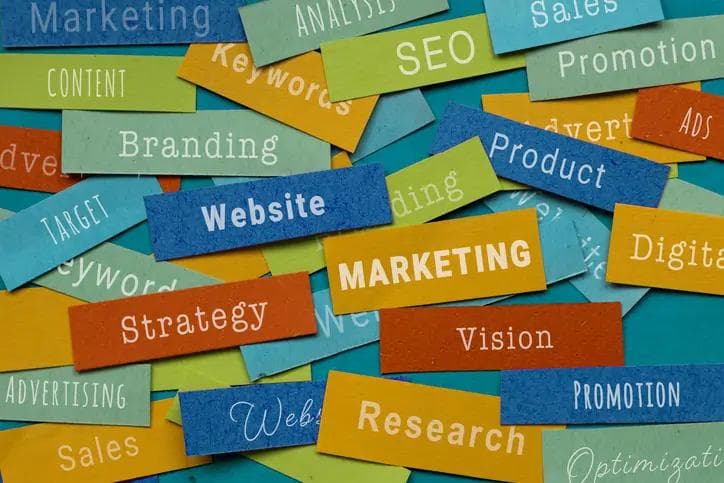4 ways to ensure a smooth and successful contract packaging expansion
4 ways to ensure a smooth and successful contract packaging expansion
Published by Jessica Weisman-Pitts
Posted on October 11, 2021

Published by Jessica Weisman-Pitts
Posted on October 11, 2021

By Mick Clark, Managing Director, WePack Ltd
Statistics show approximately 65 percent of new businesses fail during their first 10 years. This seems to be consistent across most industries and highlights how important it is for companies to plan for growth from the start.
At WePack Ltd, we experienced an impressive 26 percent growth in 2020. In this article, I’ll share our learnings to help businesses successfully expand their contract packaging facilities.
#1 Choose your area of growth
Having a strategic growth initiative in place is critical and companies need to think carefully about which areas they choose to focus on. They need to be relevant to your business needs, so you don’t lose money or opportunities through the wrong investments.
Growth can be accomplished by practices like investing in customer acquisition, expanding product lines, new hires, and locations.
A business’ industry and target market instigate which growth strategies it will choose. Your growth plan may encompass more than one initiative too.
In 2020, WePack decided to increase its production floor area by nearly 40 percent to enhance production capacity.
For us, being able to expand our product lines meant we could meet the increased enquiries we were experiencing from potential new customers and focus on more strategic customer acquisition tactics.
#2 Conduct market and industry research
Conducting industry research is one of the best ways to establish if your anticipated growth is both vital and possible.
Primary research is information that comes directly from the source – your potential customers.
Examples could include focus groups and running surveys with current and new customers. With succinct and uncomplicated questionnaires, you can analyse a sample group that represents your target market. The larger the sample, the more reliable your results
Secondary research involves gathering studies, statistics, and reports from information such as government agencies, trade associations and a local chamber of commerce.
Larger companies may have bigger budgets to spend on market research, but plenty of valuable and informative information is available through secondary research for those on a tighter budget.
In the later developmental stages, placing a new product in select locations can help gain an accurate customer response under real-life conditions.
This allows you to make changes, enhance packaging and adjust prices. The knowledge and facts revealed at this stage will shape the expectations and growth goals for your business.
#3 Invest in your employees
It can be tricky to hire for new areas of growth in your business, especially as establishing where you need more resources can mean creating new roles too.
For example, At WePack, we originally had one person in charge of overseeing production. However, as different areas of the business began to expand, we realised the level of responsibility required was too much for one person alone.
As a result, we hired several production leads for the business’ packaging silos. Now each section, has dedicated management resources, so the correct amount of attention can be given to all avenues of the business.
We all know it’s important for new recruits to be trained in the latest company procedures and protocols. However, we must remember current employees also require the necessary training to deal with new processes and demands effectively.
Clear communication is crucial for a seamless transition to new processes. Make sure you explain why changes are essential and what goals and benefits you hope to achieve by making them.
Assign a prominent employee to be your ‘new processes’ champion. They can be your company-wide on-the-ground example of what the process will look like and showcase their benefits.
#4 Identify new opportunities to add to your portfolio
It’s imperative for your business to continuously develop fresh insights to generate new opportunities that your competition has failed to spot.
Increasing market penetration is probably a good approach for those new to this concept, as you are dealing with known factors like your current products and markets.
Deciding upon the best new products or services to offer requires in-depth knowledge of who your customers are and what they need.
At WePack we’ve recongised this and decided to double the size of our cleanroom facilities. This provided more resources for our food packaging services, so we were able to offer more to existing clients and markets.
While time and effort are required, there are often services you can introduce or upgrade, which will help boost your chances of success.
Creating a free trial or product demo is a critical stage because you want to get as much feedback as possible before you officially launch something new to the market.
A deeper understanding of your product or service and what it can deliver that is different in the marketplace will determine its success or failure.
By Mick Clark, Managing Director, WePack Ltd
Statistics show approximately 65 percent of new businesses fail during their first 10 years. This seems to be consistent across most industries and highlights how important it is for companies to plan for growth from the start.
At WePack Ltd, we experienced an impressive 26 percent growth in 2020. In this article, I’ll share our learnings to help businesses successfully expand their contract packaging facilities.
#1 Choose your area of growth
Having a strategic growth initiative in place is critical and companies need to think carefully about which areas they choose to focus on. They need to be relevant to your business needs, so you don’t lose money or opportunities through the wrong investments.
Growth can be accomplished by practices like investing in customer acquisition, expanding product lines, new hires, and locations.
A business’ industry and target market instigate which growth strategies it will choose. Your growth plan may encompass more than one initiative too.
In 2020, WePack decided to increase its production floor area by nearly 40 percent to enhance production capacity.
For us, being able to expand our product lines meant we could meet the increased enquiries we were experiencing from potential new customers and focus on more strategic customer acquisition tactics.
#2 Conduct market and industry research
Conducting industry research is one of the best ways to establish if your anticipated growth is both vital and possible.
Primary research is information that comes directly from the source – your potential customers.
Examples could include focus groups and running surveys with current and new customers. With succinct and uncomplicated questionnaires, you can analyse a sample group that represents your target market. The larger the sample, the more reliable your results
Secondary research involves gathering studies, statistics, and reports from information such as government agencies, trade associations and a local chamber of commerce.
Larger companies may have bigger budgets to spend on market research, but plenty of valuable and informative information is available through secondary research for those on a tighter budget.
In the later developmental stages, placing a new product in select locations can help gain an accurate customer response under real-life conditions.
This allows you to make changes, enhance packaging and adjust prices. The knowledge and facts revealed at this stage will shape the expectations and growth goals for your business.
#3 Invest in your employees
It can be tricky to hire for new areas of growth in your business, especially as establishing where you need more resources can mean creating new roles too.
For example, At WePack, we originally had one person in charge of overseeing production. However, as different areas of the business began to expand, we realised the level of responsibility required was too much for one person alone.
As a result, we hired several production leads for the business’ packaging silos. Now each section, has dedicated management resources, so the correct amount of attention can be given to all avenues of the business.
We all know it’s important for new recruits to be trained in the latest company procedures and protocols. However, we must remember current employees also require the necessary training to deal with new processes and demands effectively.
Clear communication is crucial for a seamless transition to new processes. Make sure you explain why changes are essential and what goals and benefits you hope to achieve by making them.
Assign a prominent employee to be your ‘new processes’ champion. They can be your company-wide on-the-ground example of what the process will look like and showcase their benefits.
#4 Identify new opportunities to add to your portfolio
It’s imperative for your business to continuously develop fresh insights to generate new opportunities that your competition has failed to spot.
Increasing market penetration is probably a good approach for those new to this concept, as you are dealing with known factors like your current products and markets.
Deciding upon the best new products or services to offer requires in-depth knowledge of who your customers are and what they need.
At WePack we’ve recongised this and decided to double the size of our cleanroom facilities. This provided more resources for our food packaging services, so we were able to offer more to existing clients and markets.
While time and effort are required, there are often services you can introduce or upgrade, which will help boost your chances of success.
Creating a free trial or product demo is a critical stage because you want to get as much feedback as possible before you officially launch something new to the market.
A deeper understanding of your product or service and what it can deliver that is different in the marketplace will determine its success or failure.
Explore more articles in the Business category











